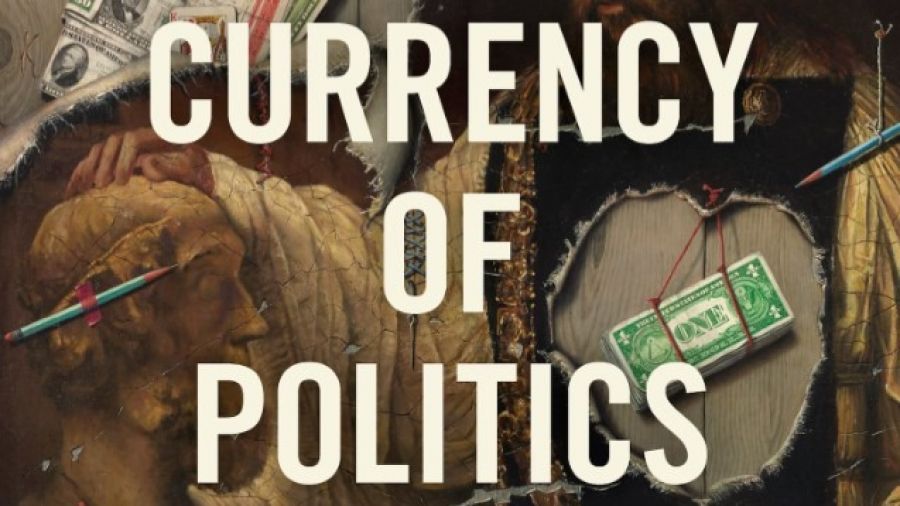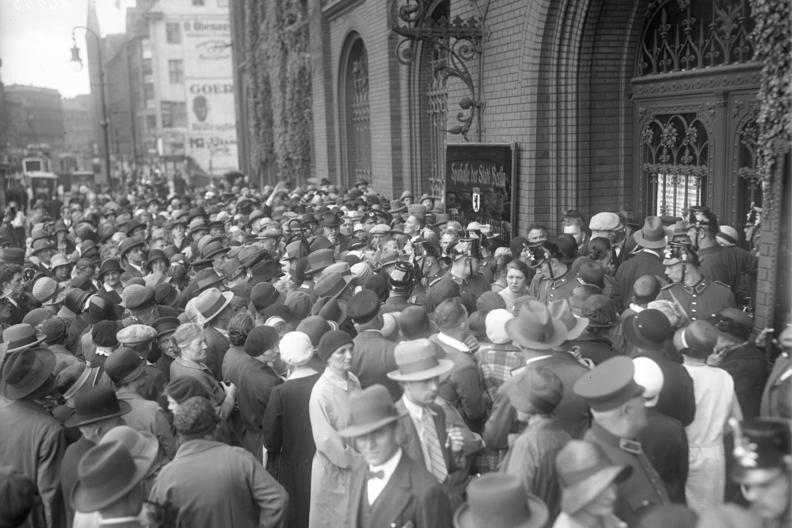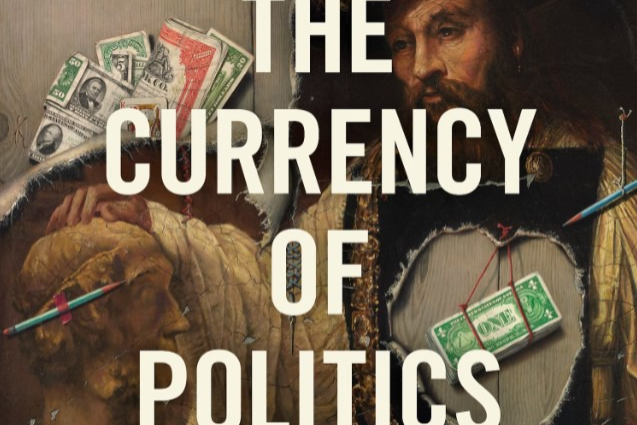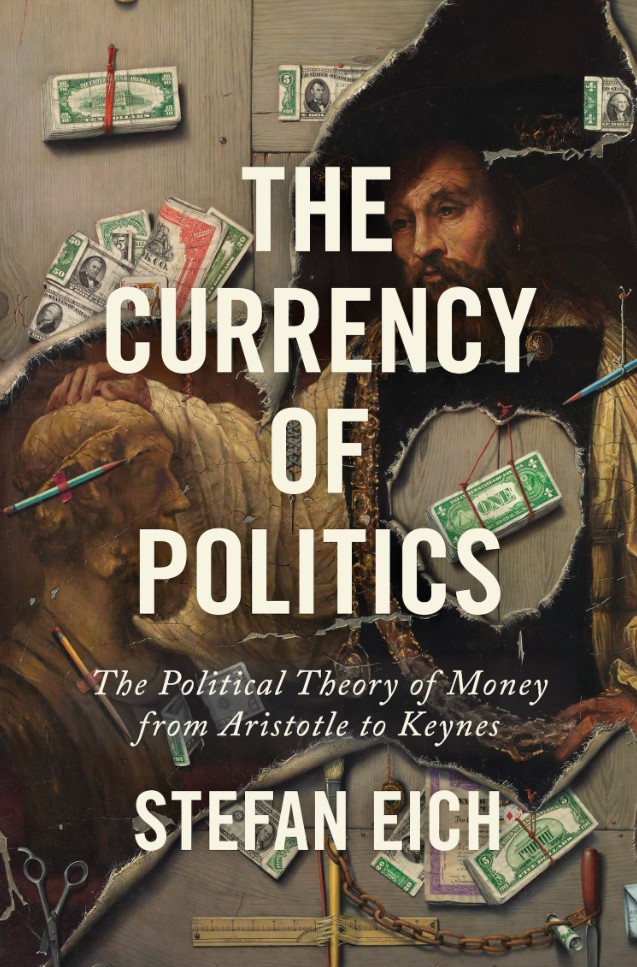
- Free Article: No
- Contents Category: Economics
- Review Article: Yes
- Article Title: Money as public good
- Article Subtitle: The politics of monetary thought
- Online Only: No
- Custom Highlight Text:
What is money? To most, it is currency in the physical form of bills and coins. To others, it encompasses any form of financial credit that mediates present versus future consumption. To the author Stefan Eich, it is an institution that was historically conceived to promote social justice and democracy, but over time has been neutered of its political nature as a public good.
- Article Hero Image (920px wide):

- Article Hero Image Caption: A bank run in Berlin, 1931 (Georg Pahl, German Federal Archives via Wikimedia Commons)
- Featured Image (400px * 250px):

- Alt Tag (Featured Image): John Tang reviews 'The Currency of Politics' by Stefan Eich
- Book 1 Title: The Currency of Politics
- Book 1 Biblio: Princeton University Press US$35 hb, 339 pp
- Book 1 Cover Small (400 x 600):

- Book 1 Cover (800 x 1200):

Furthermore, the issuing of money by government, as opposed to its modern creation by private banks, demonstrated that communal values superseded individual interests and that divergent needs could be made compatible through a common form of exchange. Missing from Eich’s version of coinage history is that, while Athenian citizens may have valued equality and democracy, the widespread practice of slavery undermined these ideals.
The book’s selective historical lens continues with an abrupt elision of thirteen hundred years in the chronology, when, according to Eich, the political symbolism of money was usurped by the theory of sound money. Eich views this paradigm shift – that money had an intrinsic relationship with scarce precious metals – through the work of English philosopher John Locke and the belief that secure property rights demanded that the nominal value of currency remain constant over time. In the context of highly volatile supplies of gold and silver during the second millennium and the problem of devalued coinage, Locke justified limiting government manipulation of money (e.g. devaluation) as an issue of public trust in sovereign pledges, even if it entailed social costs like deflation and reduced spending. As sound money policies like the gold standard were increasingly adopted in western Europe, money became ‘depoliticised’ and adherence to orthodoxy was legitimised. In Eich’s view, this conception of money merely masked its political nature and reflected the interests of democratically unaccountable elites.
Eich contrasts this revisionism with sound money detractors like the German philosopher Johann Gottlieb Fichte, who argued unsuccessfully in 1800 for the creation of fiat money that would decouple currency from precious metal supplies. Fichte’s proposal was motivated in part by growing international commerce and its attendant economic competition, which he believed were sources of international conflict, imperialism, and domestic inequality. By creating a money system independent of precious metals and closing its borders to trade, a country could, without international repercussions, issue as much money as it needed to sustain domestic spending and consumption. The value of a currency would derive from a country’s reputation, whose legitimacy was derived from its people and would thus prioritise their collective interests instead of those in industry or overseas, demonstrating Aristotle’s view of money as a public good.
Fichte’s later compatriot Karl Marx was similarly concerned about rising inequality and social welfare, but less concerned with rejecting metal-based currency. Believing that money was like capital in representing the labour value of production and thus accumulated through exploitation, Marx considered monetary reform to be futile since the financial system was a crucial component of advanced capitalism and would collapse on itself. Thus, expanding credit beyond precious metal supplies would only delay the inevitable emancipation of labourers. Eich suggests, however, that Marx’s support for sound money was more nuanced in that he saw it as possessing social value, albeit in a negative sense. To Marx, since money was a crystallisation of human labour, its exchange and accumulation effectively dehumanised that value and those who contributed to creating it.
Eich’s most sympathetic treatment is reserved for John Maynard Keynes, who, after seeing the economic consequences of the gold standard in the Great Depression, advocated an end to central bank rigidity in managing a country’s money supply. While Keynes’s views on monetary policy have been overshadowed by his fiscal policy recommendations, both were consistent about active government intervention to limit damage from economic downturns. Unemployment in exchange for price stability (as was prescribed for an internationally traded, metal-backed currency) would no longer serve societies with an expanded franchise that demanded greater transparency, accountability, and social justice. To both Keynes’s and Eich’s regret, however, sound money remained a marker of macroeconomic prudence with the US dollar replacing the British pound as the hegemonic currency tied to gold in the postwar Bretton Woods period.
While Keynesian policies were dominant in the mid-twentieth century, their inability to address supply-side shocks, starting with the 1970s oil shocks, meant that fiscal and monetary restraint regained ascendancy. Furthermore, President Richard Nixon’s announcement that the US dollar would no longer be pegged to gold marked the end of international sound money. Eich notes that fiat money, which could have been used to redistribute economic gains, was instead wielded by unelected central bankers to target price stability, which meant increased unemployment and economic recession. This democratic deficit became even more apparent with increased wealth disparities in the subsequent neoliberal decades and the preferential treatment of private banks in the aftermath of the Great Financial Crisis.
The book concludes with a reassessment of how money can re-emerge as a political institution with democratic legitimacy, including recommendations to recreate national postal banking systems and use central banks as open laboratories promoting social welfare. Missing from this discussion are considerations as to whether progressive populist policies such as modern monetary theory (MMT) are more legitimate than conservative ones like sound money, and whether democratically elected leaders like Donald Trump or Boris Johnson would use money to improve social welfare as it was originally intended.
Readers may wonder about the target audience for this book, given the frequent references to obscure political philosophers and academics, as well as eighty-one pages of endnotes. The seemingly arbitrary lineage of monetary theorists and the exclusively Western bias also narrow the scope to those who appreciate the ‘natural’ connections between money, democracy, and social justice. These ideological and cultural blinkers notwithstanding, more important is how salient is the book’s central argument, and this remains unclear. Had this book been released a year earlier, before the rapid increase in inflation refocused attention on price stability, its main thesis might have resonated more strongly with those seeking continued pandemic-era public spending and redistribution. Until grubby practical concerns about money are addressed, Eich and sympathetic progressives who want to reclaim it as a political institution may have to wait.


Comments powered by CComment